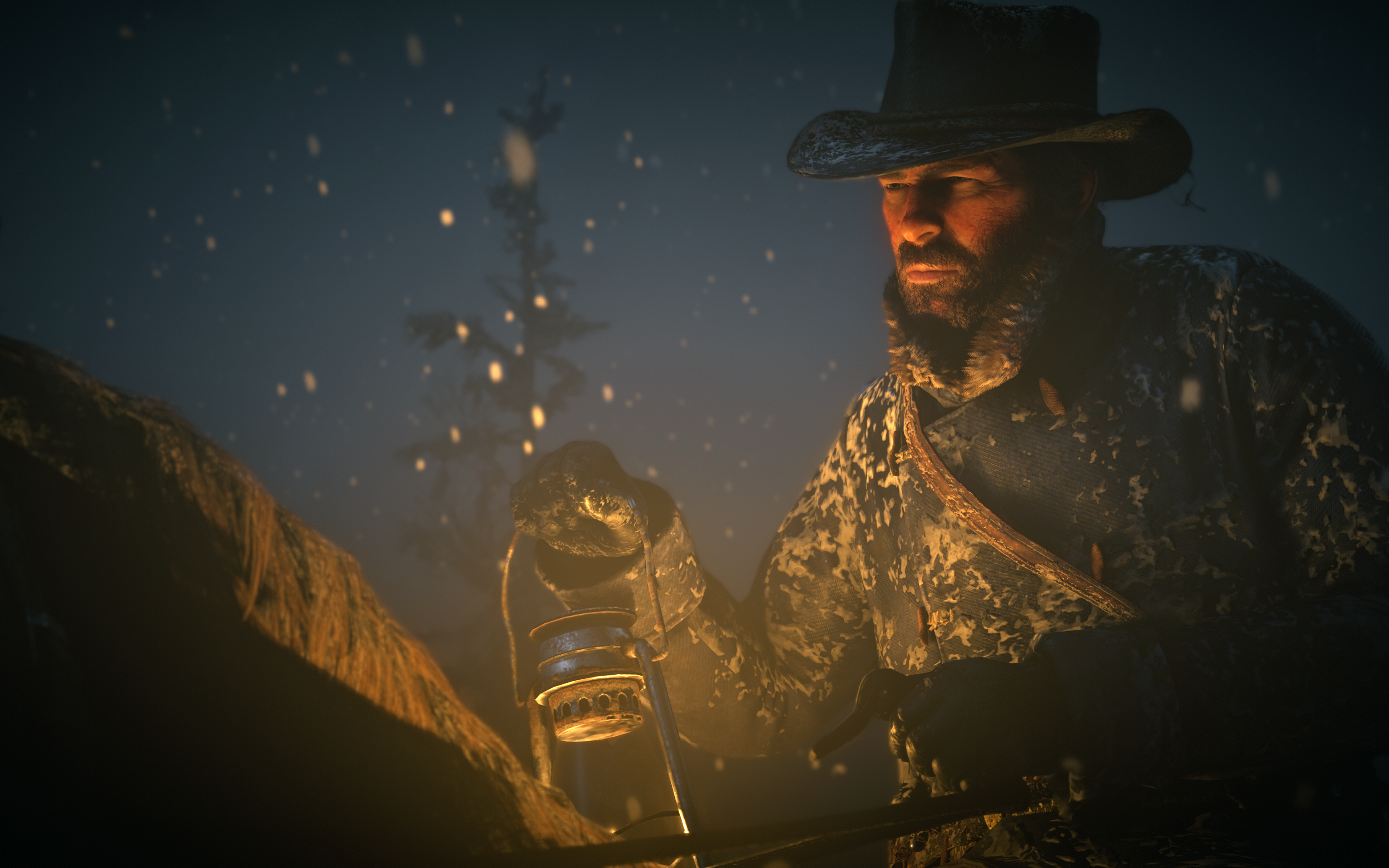The Folio Society’s Marvel Comics compilation Unforgettable Stories gives the best-of compilation a unique twist by entrusting Patton Oswalt and Jordan Blum to pitch comics fans on the individual Marvel issues that substance most. Oswalt, a comedian, actor, pop-culture writer, reigning nerd star, and Star Wars ranter, previously teamed with veteran tv author Blum to co-create the adult animated Marvel series MODOK and the creator-owned comics series Minor Threats. It is no surprise that they have strong opinions about Marvel’s best and most crucial comics.
It’s easy to see why Oswalt and Blum selected the comics in Unforgettable Stories. The issues, spanning from 1966 to 2013, come from any of Marvel’s most iconic creators. any experimentation with format, like Matt Fraction and David Aja’s Hawkeye issue “Pizza Is My Business,” from the point of view of Hawkeye’s dog. any tell watershed stories, like Stan Lee and Steve Ditko’s The Amazing Spider-Man’s “The Final Chapter!” Most of these issues supply radical, new-at-the-time perspectives on iconic Marvel heroes and villains. (See a full table of contents here.)
Still, it was hard to choose just 10 issues, Oswalt acknowledges in his introduction. His short essay about curating the book preemptively reacts to any debate about the contents: “I can hear the bleats and rumblings of, ‘But you didn’t include…’ and ‘How could you forget…’ Lemme save your vocal cords the stress — you’re right. Any objections you gotta any stories being passed over? You’re right. There’s simply besides many to fit under 1 cover. Hey, possibly buy this edition, and get all of your friends to buy one, and they’ll let us choice 10 more! Capitalism!”
Polygon sat down with Blum and Oswalt to talk about pulling together the compilation, which comics made them especially emotional, and why they’ll both keep reading month-to-month floppies as long as comics companies keep them coming.
This interview has been edited for concision and clarity.
Polygon: What kind of process did you usage to assemble this circumstantial list of comics?
Patton Oswalt: We instantly had a very, very long list, and then just had to start paring it down. We both, it turns out, have truly good memories for the stories that landed with us. So it was more about killing our darlings than trying to find 10.
Jordan Blum: I’m a bit of an X-Men guy. Patton’s a bit of a Spider-Man guy. So they got a small more exposure. But we didn’t want to flood the list with just our favourite characters. We wanted to represent the Marvel Universe.
Did it always get heated? I don’t image you screaming at each other, but curating the essentials list of anything is simply a nerdy task, and nerds like us tend to have strong opinions about any all-time best list. Did either of you gotta get emphatic or energized about absolutely needing a certain thing in this compilation?
Oswalt: The thing is, we’re in our 50s now. If we’d done this in our 20s, yeah, we would’ve been. But erstwhile you hit your 50s, you’re all like, Oh, there is so much out there, and no one’s truly right or wrong. This is just about being totally honest about what landed with us. So it was hard for me to argue with Jordan, due to the fact that he was so good at articulating — and I hope I was besides — “No, this is why this is [essential].”
I had never read that Magneto vs. Red Skull issue [1990’s Captain America #367, where Magneto sets out to punish Red Skull for being a Nazi]. erstwhile Jordan brought it up, I went and read it. I was like, Oh my God! There were things I hadn’t read — no 1 reads everything, no 1 sees or hears everything. So if anything, it was a large chance for me to read stuff that I had missed. I’m like, Oh my God! I didn’t realize there’s even more stuff out there for me to enjoy!
Blum: I think the energy came in Patton being like, “What about ‘Severance Package’?” [2001’s Spider Man’s Tangled Web #4, where 1 of Kingpin’s minions has failed him, and calmly prepares for Kingpin to execution him.] And all of a sudden, everything’s firing in my brain, I’m recalling “Severance Package” — [yells, bounces, waves arms] “Yes! I forgot about this!” The excitement was in having these stories brought back into our memories. We hope the book does the same [for readers].
Spider Man’s Tangled Web could have been the full compilation, by the way. all communicative in that series was amazing. The Rhino communicative — 1 of all the villains at the bar talking, and then Norman Osborn just lays down the law at the end. communicative after communicative of just mind-blowing stuff. So that was actually hard, picking just 1 out of that series.
How long was your list before you started trying to hit a final 10?
Oswalt: Oh man, it was long.
Blum: Like 25, 30 maybe? We started to pare down after that.
What was No. 11 on your list, the last thing you eliminated?
Blum: I truly wanted a [Bill] Sienkiewicz/[Chris] Claremont story. It might’ve been “Slumber Party” [New Mutants #20, from 1984], where they have a sleepover and Warlock shows up. It was 1 of those. And we were like, “OK, there’s 1 besides many mutant stories on this list.” [laughs]
When you were winnowing these down, how much of the conversation was about that kind of balance, in terms of making certain the overall book represented different creators or eras, as opposed to just hitting all-time favorites?
Oswalt: Oh boy, I dunno if we had a conversation so much about balance, as “How do we best represent the flow of time from the ’60s to the early teens?” So we tried to keep the mutant stuff as focused as we could.
Blum: A lot of it was very organic. We laid it out truly well in a way we weren’t planning. So much of the Silver Age has been reprinted that we just picked issues we loved that we thought were obvious. Then we tried to choice comics that were very individual to us, and that possibly were a small — I wouldn’t say specifically B-sides, but stories that just weirdly ended up being possibly not the [best known].
Oswalt: We definitely wanted to give people a sense that there is this much good stuff all week, and you never know where it’s going to come from, and then you can be taken on these monthlong journeys as you follow these runs. So if that’s what happened with Runaways #1 and the Fantastic Four issue, or if they look at “Pizza’s My Business” and go, Wow, I’ve got to see this full series! then yes, we’ve done our job.
Blum: We were conscious that these issues should be able to stand on their own in any way. evidently that Fantastic Four comic is the end of a story, and Runaways #1 is the beginning of a series story, but quite a few the another issues chosen were amazing almost-one-and-dones. Or the Daredevil issue is simply a repercussion for a large communicative we all know. But possibly you haven’t read the epilogue. And to me, that epilogue works on its own.
Reading a batch of comics that spans this time period gives a real sense for how the language of Marvel comics has changed, from the narrate-your-feelings era of the Marvel Method to a more dialogue-driven explanatory approach to the thin simplicity of The Runaways. As comic fans, what do you make of that progression throughout this book?
Oswalt: Marvel was always trying to be cognizant of what was clearly going on in society, but I think besides what was going on in comics, even on the fringes, it’s why they went and searched out people like Rick Remender and Brian Michael Bendis and quite a few these indie guys: Let’s bring in any fresh blood and light a fire under everybody!
So that’s why you get these newer forms of storytelling, due to the fact that the people at Marvel loved comics, and were excited by the new. They weren’t like, Oh, Dan Clowes and Ivan Brunetti, what is this crap? They’re just like, Oh, wow. They’re excited to work in the form. They want people to be excited about the form.
Blum: Mark Gruenwald’s Captain America to me is the bright, colorful Marvel, and then you get something like “Pizza Is My Business,” which has specified an indie spirit and is pushing boundaries of what would always be seen in a Marvel comic. Both have equal weight and value, and I think that’s what’s truly cool to showcase.
Did anything surprise you erstwhile you were either rereading old favorites or uncovering fresh favorites through each other?
Oswalt: There were Marvel comics from the ’80s — the Daredevil one, the Gruenwald 1 — that were very much meditating on stuff that we are dealing with now, stuff the writers were seeing bubbling below the surface that now has erupted. They were trying to articulate this darkness that they felt was coming, but people were like, Eh, it’s a comic book.
These guys were onto [current political issues] before the public was. We always remember Captain America’s debut was on the cover of a comic where he’s punching Adolf Hitler, before we got into the war, erstwhile a large chunk of America was like, What’s incorrect with Hitler? He’s fine. [Writers Jack Kirby and Joe Simon] saw the danger before quite a few the public could. And that just continues to happen in comics.
Blum: Also, now, as a comics author rereading Runaways, I’m like, Oh my God, that’s how you do it. That’s how you launch a series. That’s how you keep it concise and character-driven with a large hook. I think as a tv writer, everyone’s like, “Go read the pilot to Breaking Bad!” I would say as a comic writer, “Go read Runaways! This is how you set up a series.”
Oswalt: Brian K. Vaughan is the king of launching a series, though. He is the king of the first issue where on the last page, you’re like, “OH. MY. G—” Runaways. Y: The Last Man. Especially the first issue of Paper Girls. I know it’s not a Marvel comic, but that is possibly 1 of the best first-issue last frames for “Oh, oh no!” I love him so much.
This omnibus is very focused on single issues, which makes for that kind of cliffhanger. There’s been a lot of online musing about whether individual comics, floppies, are or aren’t selling poorly and whether they’re on the way out. Are you devoted to the single-issue experience, as opposed to waiting for collected books?
Oswalt: I got to have my weekly issues, man. It’s a truly good way to teach you storytelling. How do you tell a communicative that will keep people hooked until the next month? Think of all the distractions we have going on [picks up his cell telephone and waves it], but there are inactive writers who know how to do something that’s going to come out erstwhile a period and keep you going, All right, what’s the next thing? I’m waiting for it! I love it.
Blum: It’s so habitual for me! It’s how I like to consume things, in the same way that I like a week-to-week release of a show, as opposed to being able to binge the full thing. But erstwhile I go back to reread an arc, I love having a truly nice, clean graphic novel. That’s my preferred way to go back to certain stories.
Many of these stories were fresh for me, but I could clearly see how they broke the mold for comics in their different eras, how they represent new, bold storytelling choices. But “The Last Stand,” the Fantastic Four issue from 2011, seems little groundbreaking. What made that 1 essential for you?
Blum: The fast answer is, it made me cry erstwhile I read it. The amazing thing about that is — I have been reading comics since I was 2 years old. Characters die all period and come back. And the Fantastic 4 have been around virtually since the beginning of the Marvel Universe. But somehow, Jonathan Hickman gave me something that felt so fresh and unique and present that it invoked that emotional response.
I should know better. I feel like I’ve seen all Fantastic 4 communicative a million times, but he managed to do that to me. I think that’s the magic of comics, is taking these characters and uncovering fresh ways to tell stories and evoke emotions. So that’s why it’s in there — it’s a master class in taking the old and doing something fresh with it.
If Marvel came back to you and said, “This book did amazing numbers, we want each of you to curate a solo book around a favourite character, but you can’t do your favorites — Jordan, you can’t do X-Men, Patton, you can’t do Spider-Man” — what would your first choice be for a follow-up?
Oswalt: I mean, we didn’t include any Hulk stories, any of the Peter David Hulks. There was any amazing stuff there. That’s one. There’s a Punisher issue called “The End,” where fundamentally it’s the Punisher at the end of the world, and it’s so ridiculously dark that it’s almost a parody of the Punisher: Let’s take this as far as we can go. Gail Simone had any amazing runs. So there are so many another areas we could explore.
Blum: I think I would choice any truly obscure stuff, like a What The—?! compilation. I haven’t read them in years, but they had specified an impact on me. What The—?! is like Marvel’s Mad. Also, I was a large fresh Warriors guy.
Oswalt: It would be really, truly cool to collect 10 comics that clearly, very visibly influenced everything afterward. There’s very circumstantial issues of Daredevil: Born Again where I think comics just were not the same after those issues came out. Same with the first issue where Bendis redid Spider-Man. That was like, Oh, things are now different from this point on.
Blum: I would want to do 1 that’s like, storylines. That was the thing I kept uncovering to be limiting. It was like, “Well, can’t we just put all 4 issues of this storyline in here?” But that was counter to what we were doing. So I guess we would request an omnibus this large [holds hands 2 feet apart], but we could put in the full Dark Phoenix saga, or something like that.
What’s the most fresh comic you’ve considered this level of stone-cold classic?
Oswalt: There’s 1 I’m reading right now called The Power Fantasy. There’s a thing erstwhile individual kicks open a door, the way Alan Moore did with Watchmen. People kind of stand in the doorway, and then people go through. So Astro City was like, “I’m going through the portal Alan Moore opened up.” And the latest 1 to do that is Kieron Gillen with Power Fantasy. I don’t know how many people are reading it, but it is 1 of those things I think quite a few comics creators are reading, and you’re going to see any definite changes happening.
Blum: For Marvel in particular, I think we haven’t even begun to appreciate House of X and how crucial and next-level that was. That would be 1 of my first picks for fresh classics.
What’s the intended takeaway erstwhile individual reads this book? What do you want them to feel or think or do next?
Oswalt: I want them to feel like, “Oh my God, there are stories like this that I missed, that I can go back and read? What is coming down the line if this is what they do on a regular basis? What’s going to be out in the coming weeks? In the coming months? In the coming years? I’ve got to choice a couple titles and follow them. I’ve got to choice a couple writers that I truly love and follow them and see what they do.” due to the fact that that’s the joy of [comics fandom].
Blum: Yeah, uncover those hidden gems, then go search out the fresh ones before they’re established.























